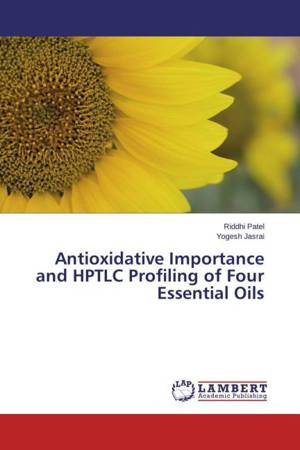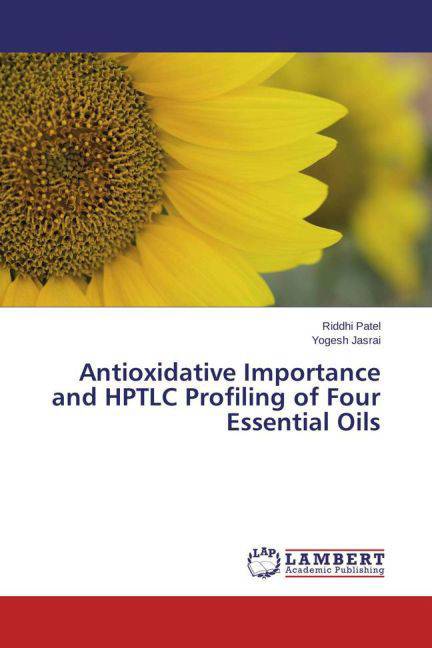
- Afhalen na 1 uur in een winkel met voorraad
- Gratis thuislevering in België vanaf € 30
- Ruim aanbod met 7 miljoen producten
- Afhalen na 1 uur in een winkel met voorraad
- Gratis thuislevering in België vanaf € 30
- Ruim aanbod met 7 miljoen producten
Zoeken
Antioxidative Importance and HPTLC Profiling of Four Essential Oils
Riddhi Patel, Yogesh Jasrai
Paperback | Engels
€ 38,95
+ 77 punten
Omschrijving
During the normal metabolism in our body, hydroxyl and reactive oxygen radicals also referred as "Free radicals" are produced. They are unstable and extremely reactive in nature and responsible to damage almost every molecule found in living cells. Thereby free radicals affect human health and lead to several degenerative diseases like atherosclerosis, hypertension, heart attack, diabetes, arthritis, immunosuppression, neurodegenerative diseases, parkinson's and alzheimer's diseases, cancer and premature body aging. While "Antioxidants" are the compounds which can reverse the damage. Medicinal plants, herbs and spices are a rich source of natural antioxidants. Thus their consumption or use can reduce the free radicals damage. Different antioxidant compounds have various mode of actions on free radicals. Thus antioxidant potential of desired compound can be screened effectively by using more than one antioxidant assay. In the present study four essential oils of Indian plants namely, Cymbopogon citrates, Eucalyptus globules, Gaultheria procumbens and Syzygium aromaticum were studied for HPTLC and screened for the presence of antioxidant potency using % TPC, DPPH RSA and FICA assays.
Specificaties
Betrokkenen
- Auteur(s):
- Uitgeverij:
Inhoud
- Aantal bladzijden:
- 56
- Taal:
- Engels
Eigenschappen
- Productcode (EAN):
- 9783659760211
- Verschijningsdatum:
- 17/07/2015
- Uitvoering:
- Paperback
- Afmetingen:
- 150 mm x 220 mm
- Gewicht:
- 95 g

Alleen bij Standaard Boekhandel
+ 77 punten op je klantenkaart van Standaard Boekhandel
Beoordelingen
We publiceren alleen reviews die voldoen aan de voorwaarden voor reviews. Bekijk onze voorwaarden voor reviews.








